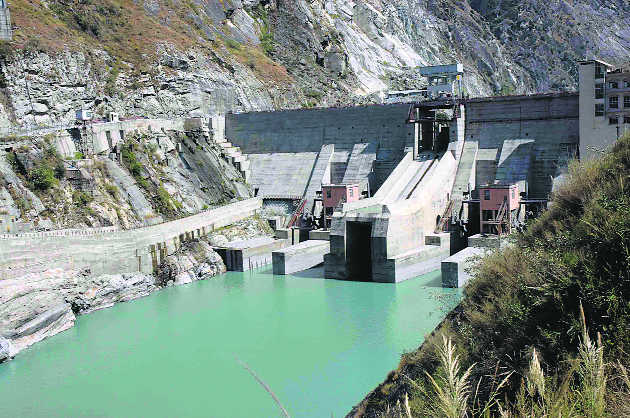
Himachal has 10,534 MW of installed hydropower capacity.
Rakesh Lohumi
Exorbitant employee cost, highest in the country, continues to be the bane of the state power utility (HPSEBL). A reluctant unbundling exercise and all the reforms that followed have failed to bring down the burgeoning expenses on salaries, pensions and terminal benefits. The numerous information technology initiatives and half-hearted attempts to prune the over-staffed organisation have also not helped much and the impending 7th Pay Commission will only make things worse.
The debt-ridden state is forced to shell out Rs 475 crore to subsidise power tariff for domestic consumers, making it obvious that the cost at which the HPSEBL is supplying power is too high and unaffordable for the common people. More so, because Himachal is a power-surplus state with an installed capacity of 10,534 MW and the government gets 12 per cent of the power generated from projects set up within the state after 1990 free of cost. The cost of power supply is high, mainly on account of unreasonably high expenditure on employees. Worse, the burden on account of pension and terminal benefits is shooting up as the number of retirees has gone up to 24,423 even though the strength of employees has come down slightly and stood at 17,837 on March 31.
The average cost of supply has risen to Rs 5.59 per unit, as the employee cost has been mounting and comes to Rs 1.97 per unit, according to the latest tariff order of the State Electricity Regulatory Commission (SERC). Himachal follows the Punjab pay scales but the employee cost of Punjab State Power Corporation Limited is only 96 paise per unit. Topographically, the neighbouring, Uttarakhand, has working conditions similar to that of the state but the employee cost of Uttarakhand Power Corporation Limited (UPCL) is just 30 paise per unit. It is true that the pension burden of the retirees is borne by the government but even after including that, the employee cost of the UPCL will be less than 50 paise per unit.
A look at the employee cost as percentage of Aggregate Revenue Requirement (ARR) approved by the SERC provides an idea of the unreasonably high expenses on salaries and pensions. The employee cost of various power utilities varies from six to 13 per cent of the ARR. However, in case of the HPSEBL, it is as high as 31 per cent of the ARR approved for 2018-19.
The employee cost has been increasing at an alarming rate and it is the main factor contributing to the rising cost of supply. The ARR rose from Rs 4,570 crore in 2015-16 to Rs 5,389 crore in 2018-19, an increase of 15 per cent, whereas the employ cost shot up by a whopping 23.5 per cent from Rs 1303 crore to Rs 1,699 crore over the period.
The power utility has demanded Rs 1,050 crore, Rs 377.54 crore for previous year’s arrears and Rs 672.18 crore, to absorb the impact of the 7th Pay Commission revision, but the SERC allowed a provisional Rs 200 crore. The failure of the government to ensure proper unbundling of the board has led to a situation where the expenditure on pensions and terminal benefits of transmission and generation wings’ employees are also being borne by HPSEBL.
A redeeming feature has been that the functioning of HPSEBL is improving and it has been able to adhere to the trajectory approved by the SERC to bring the transmission and distribution losses have come down to 12 percent.
The actual consumption has declined significantly mainly due to economic slowdown. Against 8,217 mu approved in MYT order for 2015-19 period the actual consumption was only 7,819 mu in FY 15.There was negative growth in the following year as consumption fell down to 7,744 mu against approved 8654 mu. The commission reduced the approved quantum for the remaining period during mid-term review to 8,026 mu from 9118 mu for FY17, 8,398 mu from 9612 mu for FY18 and 8794 mu from 10,136 mu for FY19.Implementation of schemes to promote use of LED lights also affected domestic consumption to an extent.
The burden of pension should be borne by the government as the board was created from the Department of Multi-Purpose Projects and Power and the service conditions of employee, including pension, were retained and clearly mentioned in the appointment letters. It will help bring down the employee cost by about 40 per cent. — RL Justa, a retiree and a former general secretary of the Himachal Diploma Engineers Association



























